genetics and evolution Notes
Genetics and evolution
Approaching the topic
- Understanding the concepts
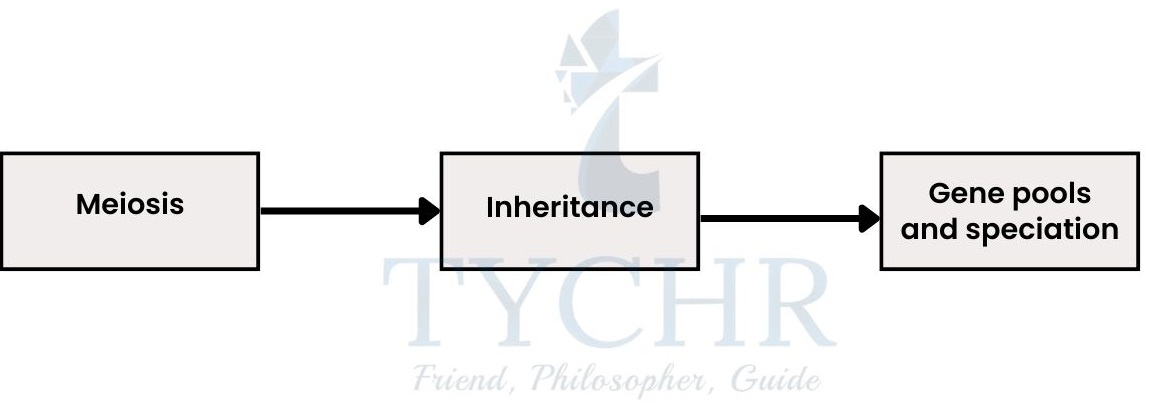
- Application of these concepts
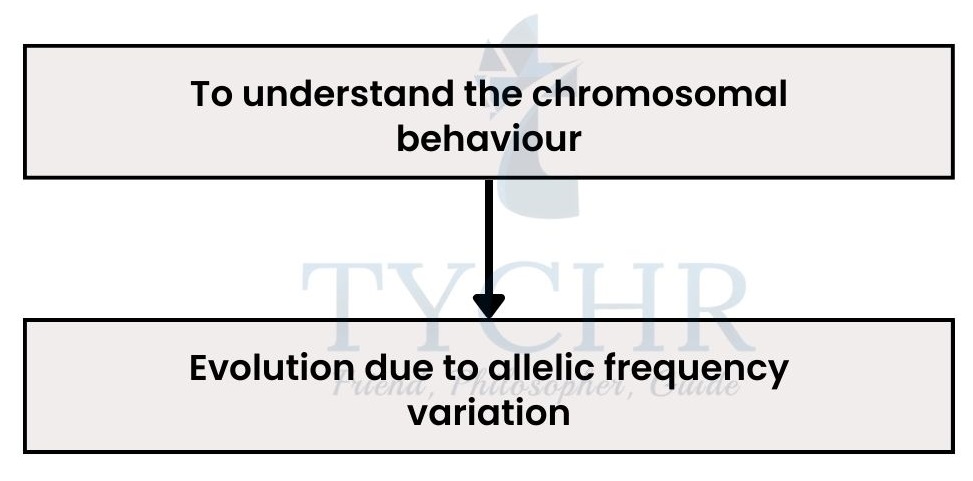
Meiosis
Fates of meiosis
- Replication of chromosomes and joining of two copies of chromosomes with each other by centromere.
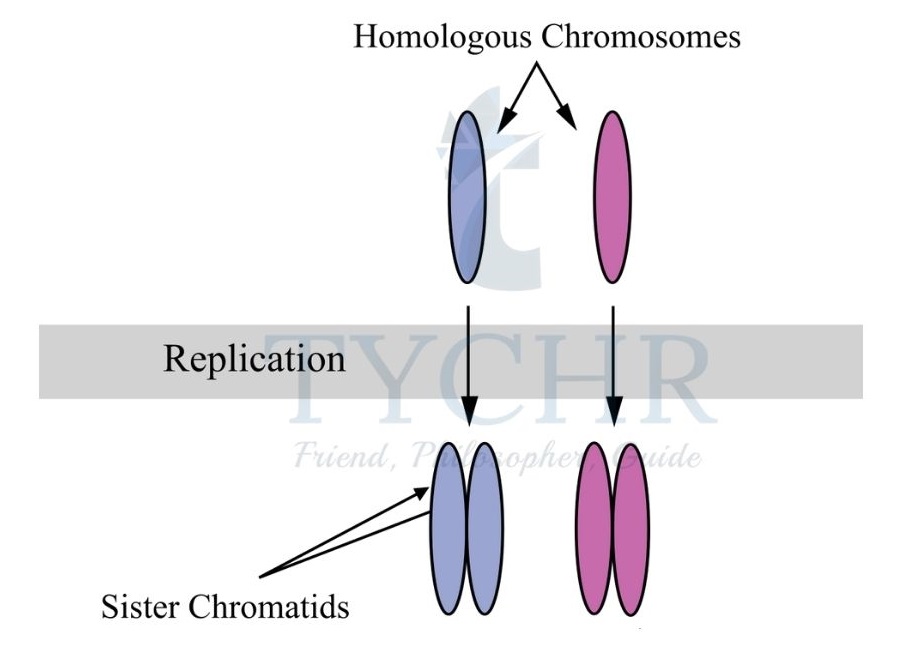
Figure 10.1 Chromosomes before and after replication - Formation of bivalent chromosome during prophase I. Random orientation and alignment on equatorial plate at metaphase stage followed by separations in next stages.
- Two homologous chromosomes are not identical because each of the two chromosomes is received from a different parent. But sister chromatids are exactly identical.
- Crossing over occurs during prophase I resulting in the exchange in DNA material between non-sister chromatids. It is an enzyme-mediated process and the enzyme involved is recombinase.
- Chiasma forms while crossing over. It is a point of adherence of two non-sister chromatids for efficient exchange of genetic material. The chromosomes fall apart eventually but chiasma sites restrict it from parting, therefore the smaller portion of the chromosomes gets crossed.
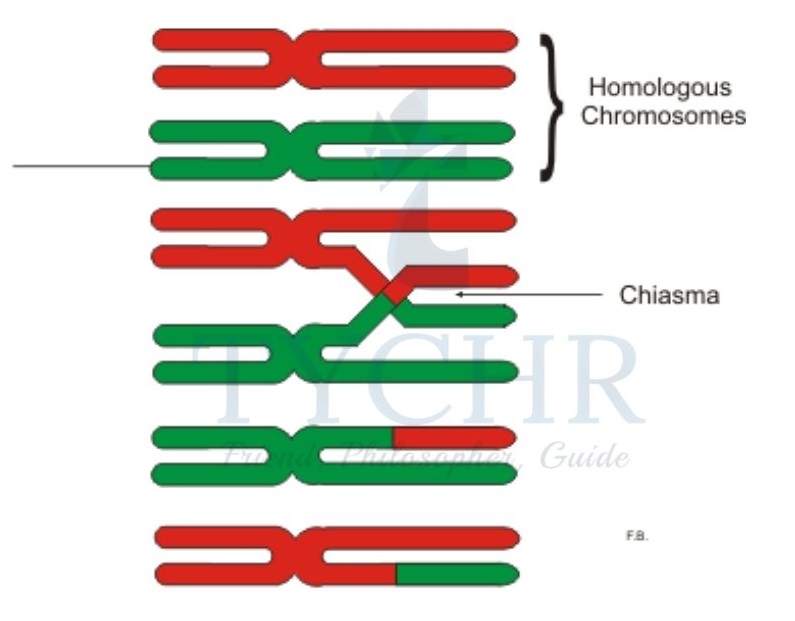
Figure 10.2 Chiasma formation and crossing over between the two chromosomes containing allele Ab and aB respectively
Law of the independent assortment: This law stays that the separation of one pair of alleles between the daughter cells is independent of another pair of alleles. This law was put forward by Gregor Mendel in his studies of genetic relations.
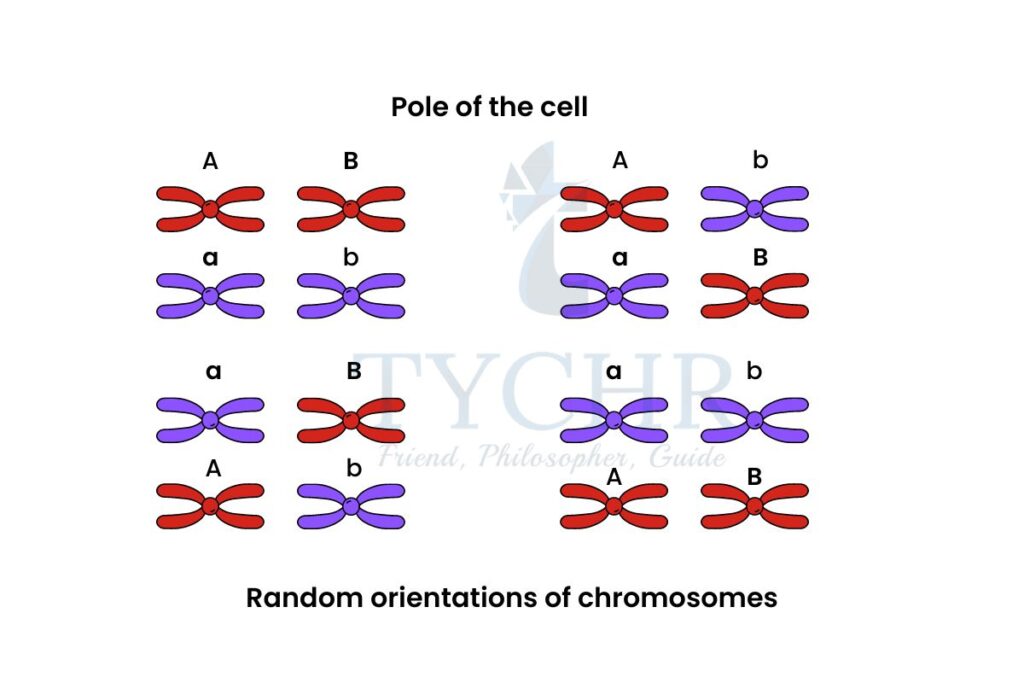
How it is co-related with meiosis?
- The process of meiosis ensures this law. The random orientation of chromosomes during metaphase results in the situation, which results in an independent assortment of alleles during anaphase I.
- There are 4 possibilities of alignment which make sure that each allele has a 50% chance of moving to the same pole and the chances of two alleles coming together at the same pole are 25%.
Inheritance
- Dihybrid cross
- Law of Segregation: It states that during the formation of the gametes the pair of alleles for a specific trait separates such that the offspring receive one allele from each parent. This law is one of the conclusions of dihybrid cross.
- The crossing of the two contrasting characters is called dihybrid cross.
- The first ever dihybrid cross was also done by Mendel. He considered two characters; seed shape and seed colour of the pea plant to show his study.
- In Pisum sativum, the seed shows wrinkled and round shape among which the round shape is dominant and shows yellow colour as dominant over green colour (recessive).
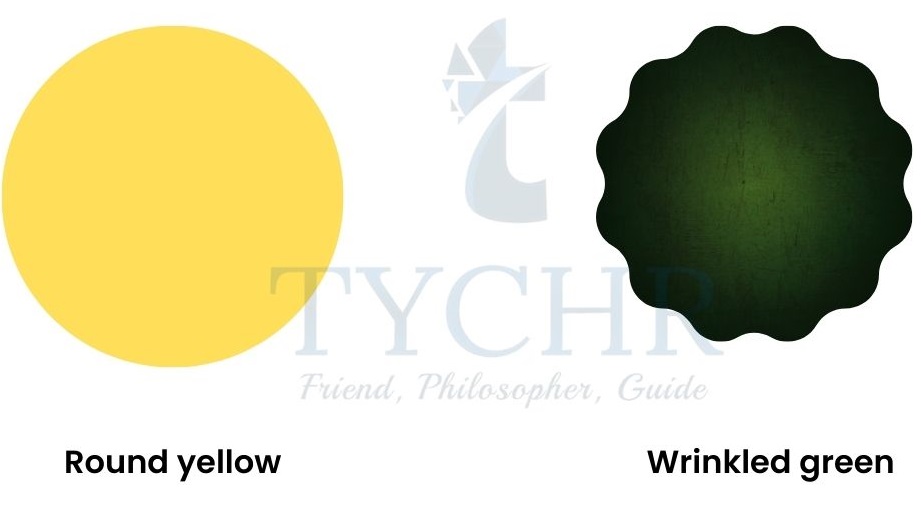
Round Yellow(left) Wrinkled green(Right)
- Let us consider ‘R’ allele for round shape and ‘r’ for wrinkled, ‘Y’ for yellow and ‘y’ for green.
- The combinations; RRYY and RrYy represent round yellow seed, rryy represents wrinkled green seeds.
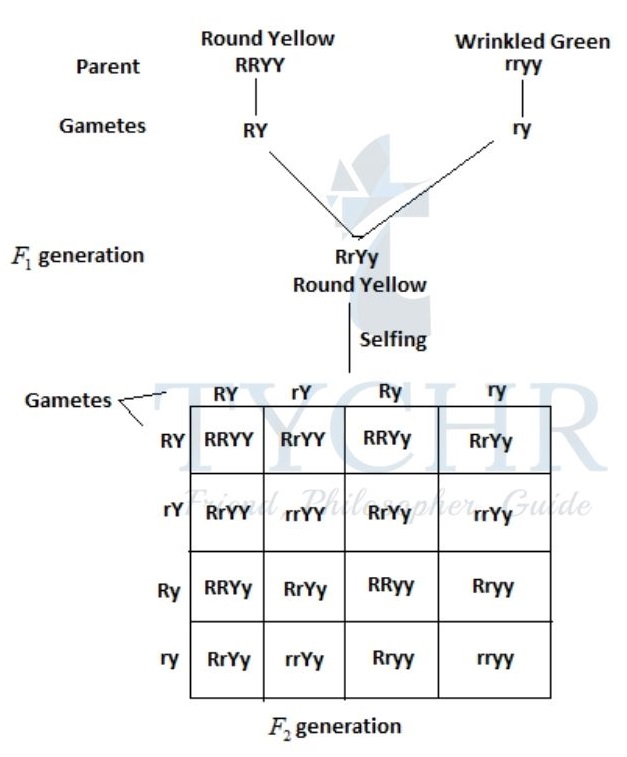
Round Yellow And Wrinkled Green Combinations
Linkage
- When two genes are found on the same chromosome i.e. really close to each other, then they are called linked. The tendency of these genes to pass on to the next generation together is called linkage.
- When the linked genes are found on the autosomes then it is called autosomal linkage and it is called sex linkage when they are present on the X-chromosome.
- Linkage is mostly studied in Drosophila melanogaster (fruit fly) and it was found that it has a grey or black body and long or short wings.
- The alleles for these character are; ‘G’ and ‘g’ for grey and black body respectively, ‘L’ and ‘l’ for long and short wings respectively.
- The combinations; GGLL and GgLl represent grey bodied and long winged fly, while ggll represents black bodied and short winged fly. Same law of dominance is applied.
- Crossing over can still occur and may result in some unpredictable results.
Types of variation
- Two types: Continuous and discrete or discontinuous variation.
- Continuous variation deals with the spectrum of phenotypes and shows an uninterrupted range of phenotypes of a particular character while discontinuous variation deals with few phenotypes and can show two or more forms of a particular character.
- When an inheritance involves two or more genes influencing one character, then it is called polygenic inheritance. It is an example of continuous variation.
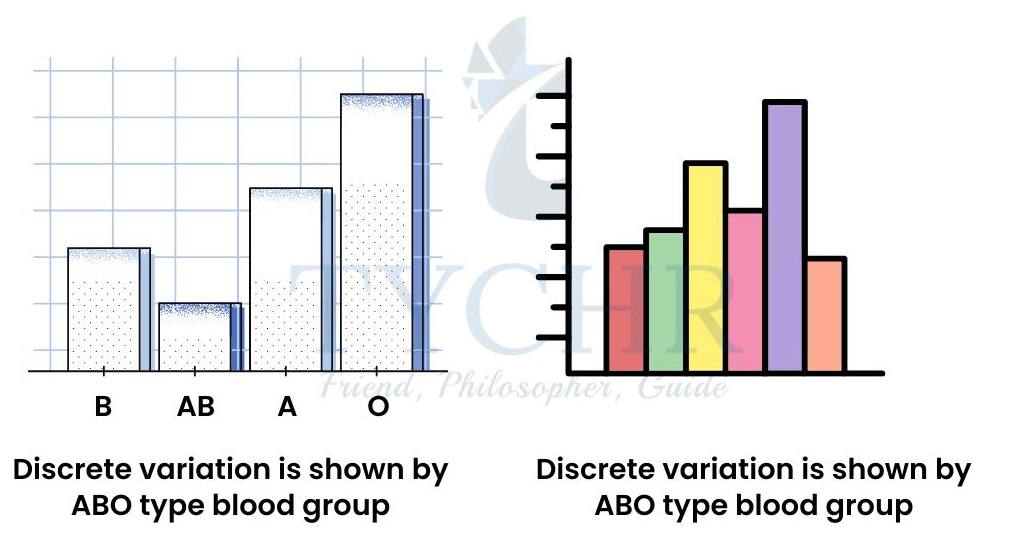
Chi squared tests
- These are the tests done to actually check the accuracy of possible ratios come by crossing.
- It has been always seen that observed values (experimental results) are differing from the expected values (calculated) so it is the test to find out whether the difference between the observed and expected values are quite significant or not, statistically.
How it works?
- There are two concepts (hypothetically);
- Ho – null hypothesis, it suggests that traits assort independently and the values therefore can be deviated.
- H1 – suggests that traits do not assort independently.
- Degree of freedom is the value of (total classes – 1). For example – in a monohybrid cross there are two classes and in a dihybrid cross there are 4, so there d.f. will be 1 and 3 respectively.
- There are some probability values but the convention is to look for 05 (5%).
- The formula used is; 𝜒2 = ∑ (𝑂−𝐸)/𝐸
where, O is observed value and E is expected value.
c is Greek letter called chi. - Here are the critical values of c2 up to 3 degree of freedom:
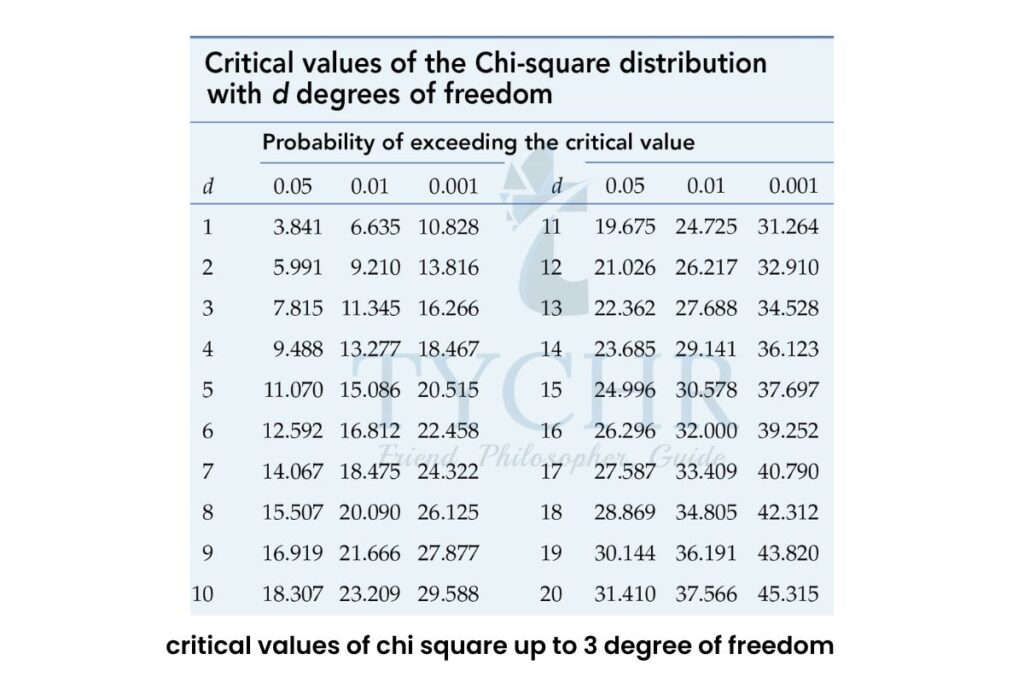
- Application of these values are such like that, if calculated c2 > critical c2 then reject null hypothesis and vice versa if calculated c2 < critical c2.
Gene pools and speciation
- Allele frequencies and evolution
- The entirety of the genetic information that is present in the reproducing members of a population at any given time is known as the gene pool.
- Allele frequency of a population may change due to certain causes like mutation by the time, indeed it does not remain the same for long. Change in the allele frequency leads to evolution.
- Hardy-Weinberg equation;It is the equation to calculate the allele frequency, genotypes or phenotypes within a population. It states that the sum of frequency of dominant allele and frequency of recessive allele must add up to 1.
Let us consider, ‘p’ to be frequency of dominant allele and ‘q’ to be the frequency of the recessive allele. The equation will be,
𝑝 + 𝑞 = 1
Considering diploid organism with two copies of the genes the equation would be,
(𝑝 + 𝑞)2 = 1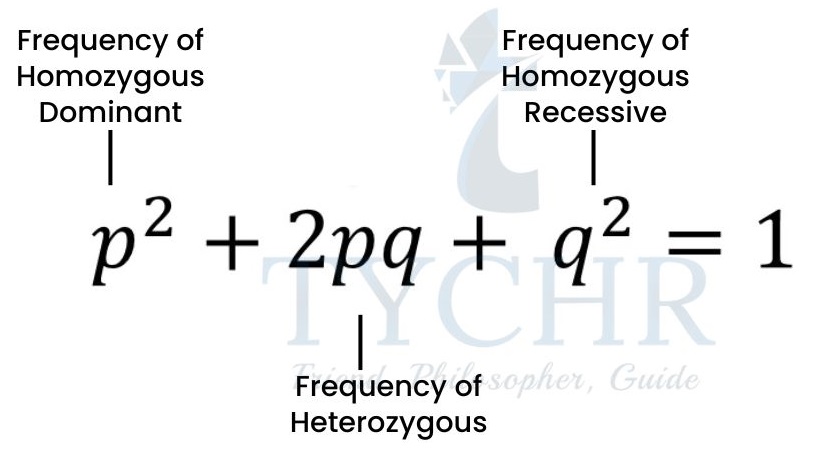
- Variation in allelic frequency by natural factors leads to different types of selection of equilibrium:
- Directional selection- When a phenotype is chosen as the most appropriate by natural selection than the other, it is called directional selection.
- Stabilizing selection- When one phenotype is chosen as the most appropriate by natural selection than two most extremes, it is called directional selection.
- Disruptive selection- When two extreme phenotypes are chosen as the most appropriate by natural selection rather than one, it is called directional selection.
Reproduction isolations
Some factors cause the hindrance in a major proportion which fall apart the populations and cause barriers in reproducing together.
These isolations include:
- Geographical isolations- It includes physical barriers like lakes, mountains or any such land or water formations which prevent opposite partners from mating. Once majorly separated, two kinds of populations are formed.
- Temporal isolation- Time reference acts as the barrier in this kind of isolation. The maturity of an individual may attain before the other, while the other is still in its juvenile phase.
- Behavioural isolation- The behavioural patterns causes separations. One individual in a population may be so different in its behaviour that the opposite gender may not find it attractive or worth it for reproducing together.
Polyploidy can also cause reproductive isolation, because if in one population some individuals have three sets of chromosome (3n) i.e. triploid and some individuals have two sets (2n) or four sets (4n) of chromosomes then they will be evolving differently.
All the reproductive isolation factors lead to speciation.
Rate of speciation
- The rate of speciation can be judge by two ways:
- Gradualism: The changes happen are small, continuous and occur at a very slow rate. This idea was adopted by Charles Darwin while proposing his ideas about natural selection.
- Punctuated equilibrium: This idea suggests that the changes happen quickly and no or subtle change happens thereafter.

